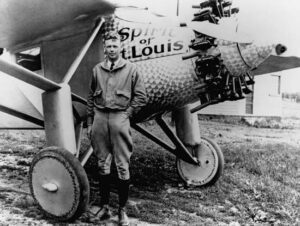In the annals of aviation history, few stories captivate the imagination like that of the Spirit of St. Louis trip. This iconic journey, undertaken by the legendary Charles Lindbergh in 1927, marked a milestone not only in aviation but also in the human spirit’s boundless capacity for adventure and exploration. Join us as we take a detailed look back at this historic voyage, exploring its significance, the aircraft, the daring pilot, and the unforgettable moments that define the Spirit of St. Louis trip.

The Spirit of St. Louis: A Marvel of Engineering
The Spirit of St. Louis was a custom-built, single-engine monoplane designed exclusively for Lindbergh’s transatlantic flight. This high-winged aircraft, constructed by Ryan Airlines in San Diego, California, was a triumph of engineering for its time. With a wingspan of 46 feet, 9 inches, and powered by a reliable Wright Whirlwind J-5C engine, the Spirit of St. Louis was a study in simplicity, stripped of non-essential features to maximize fuel efficiency and range.
Navigating the Skies: The Route for the Spirit of St. Louis
Charles Lindbergh’s route from New York to Paris was a daring and meticulously planned endeavor. He took off from Roosevelt Field, Long Island, New York, on the morning of May 20, 1927, heading eastward towards Europe. Lindbergh had to navigate through challenging weather conditions, navigate by the stars, and endure fatigue during the grueling 33.5-hour flight.
The Journey Begins: Roosevelt Field to Le Bourget Field
Lindbergh’s takeoff from Roosevelt Field was nothing short of historic. As thousands of onlookers cheered him on, the Spirit of St. Louis lifted into the skies, beginning its epic journey across the Atlantic. Lindbergh battled fatigue, sleep deprivation, and icing on his way to Paris. The isolation of the cockpit was broken only by the occasional radio contact with ground stations and the comforting hum of the engine.
The Night of Solitude
Perhaps one of the most striking moments of Lindbergh’s trip was the night he spent alone over the vast expanse of the Atlantic Ocean. With the roar of the engine as his constant companion, he was entirely reliant on his celestial navigation skills, using a sextant to pinpoint his location by the stars. The inky blackness of the night sky, punctuated by the distant glow of stars, must have been both awe-inspiring and deeply isolating.
Land Ho! Arriving in Paris
As Lindbergh approached the European continent, a sense of anticipation must have welled up within him. On May 21, 1927, he spotted the coast of Ireland, confirming his successful navigation across the Atlantic. Hours later, he touched down at Le Bourget Field in Paris to a euphoric crowd of over 100,000 spectators. Charles Lindbergh had made history as the first person to complete a non-stop solo flight across the Atlantic Ocean.
Legacy of the Spirit of St. Louis Trip
The Spirit of St. Louis trip remains an enduring symbol of human achievement, determination, and the relentless pursuit of exploration. Charles Lindbergh’s incredible feat opened the door to a new era of aviation and inspired countless others to take to the skies. His flight demonstrated the power of individual determination and the human spirit’s capacity to overcome seemingly insurmountable challenges.
Hope You Enjoyed This
The Spirit of St. Louis trip is a testament to the indomitable human spirit and the incredible advancements in aviation that have shaped our world. Charles Lindbergh’s solo flight across the Atlantic Ocean serves as a reminder that with courage, innovation, and unwavering determination, humanity can achieve the extraordinary. This historic journey continues to inspire generations, reminding us that the sky is not the limit, but only the beginning of our boundless exploration. Next week we will publish our 4th Quarter 2023 Calendar of Events, Until Then Be Social, Fly Private!
